List of British airships on:
[Wikipedia]
[Google]
[Amazon]
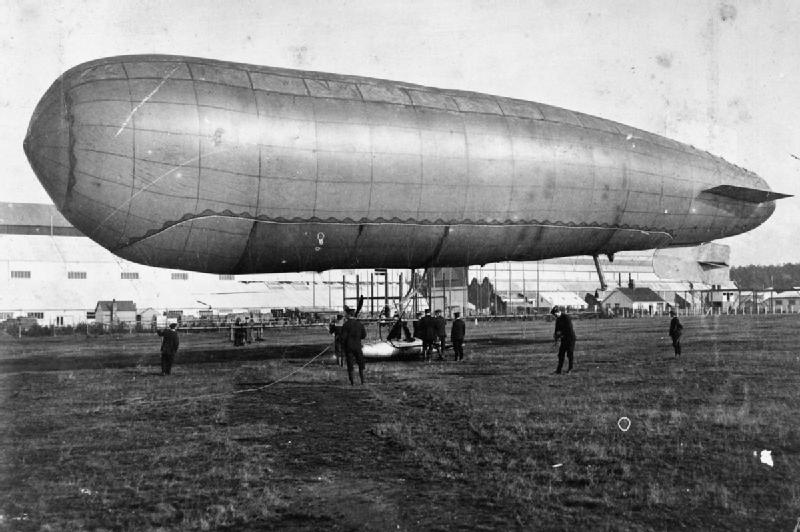
: Spencer's Airship No. 1 - "The Mellin Airship" (after the advertising that it carried); first flight, 22 September 1902
: Spencer's Airship No. 2 - 1903
 : Willows Numbers 1 to 5 - constructed by
: Willows Numbers 1 to 5 - constructed by

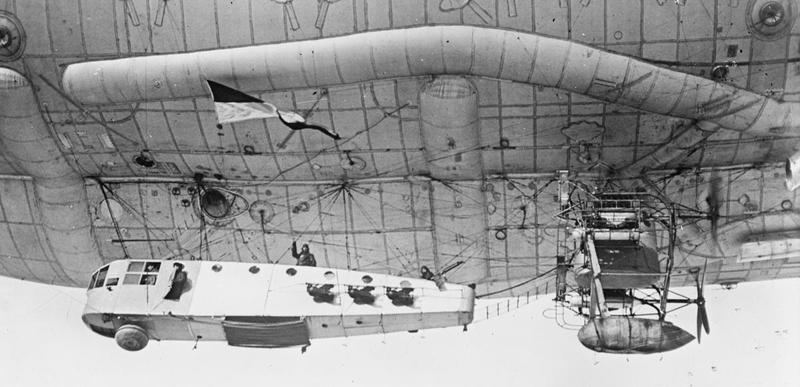 : Willows No. 4 - His Majesty's Naval Airship No. 2 - purchased in 1912
: SS (Sea Scout) class - 60 airships, the first entered service in March 1915, being a rebuild of Willows No. 4
: C (Coastal) class - 35 airships, the first entered service in March 1916, being a rebuild of a Franco-Spanish
: Willows No. 4 - His Majesty's Naval Airship No. 2 - purchased in 1912
: SS (Sea Scout) class - 60 airships, the first entered service in March 1915, being a rebuild of Willows No. 4
: C (Coastal) class - 35 airships, the first entered service in March 1916, being a rebuild of a Franco-Spanish
 * His Majesty's Airship No. 1 - also known as the ''Mayfly''. Wrecked before her maiden flight in May 1911
;
* His Majesty's Airship No. 1 - also known as the ''Mayfly''. Wrecked before her maiden flight in May 1911
;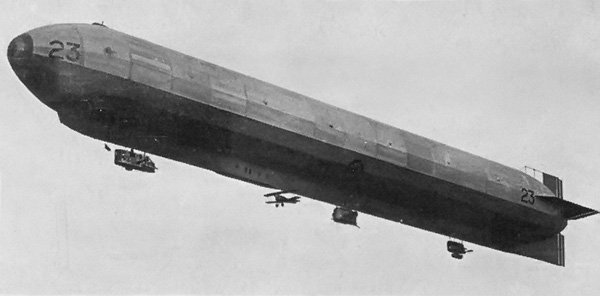 * No. 24r - first flight 1917, scrapped 1919
* No. 25r - first flight, 14 October 1917. Scrapped September 1919
* R26 - first flight 1918. Scrapped following accident, March 1919
;
* No. 24r - first flight 1917, scrapped 1919
* No. 25r - first flight, 14 October 1917. Scrapped September 1919
* R26 - first flight 1918. Scrapped following accident, March 1919
;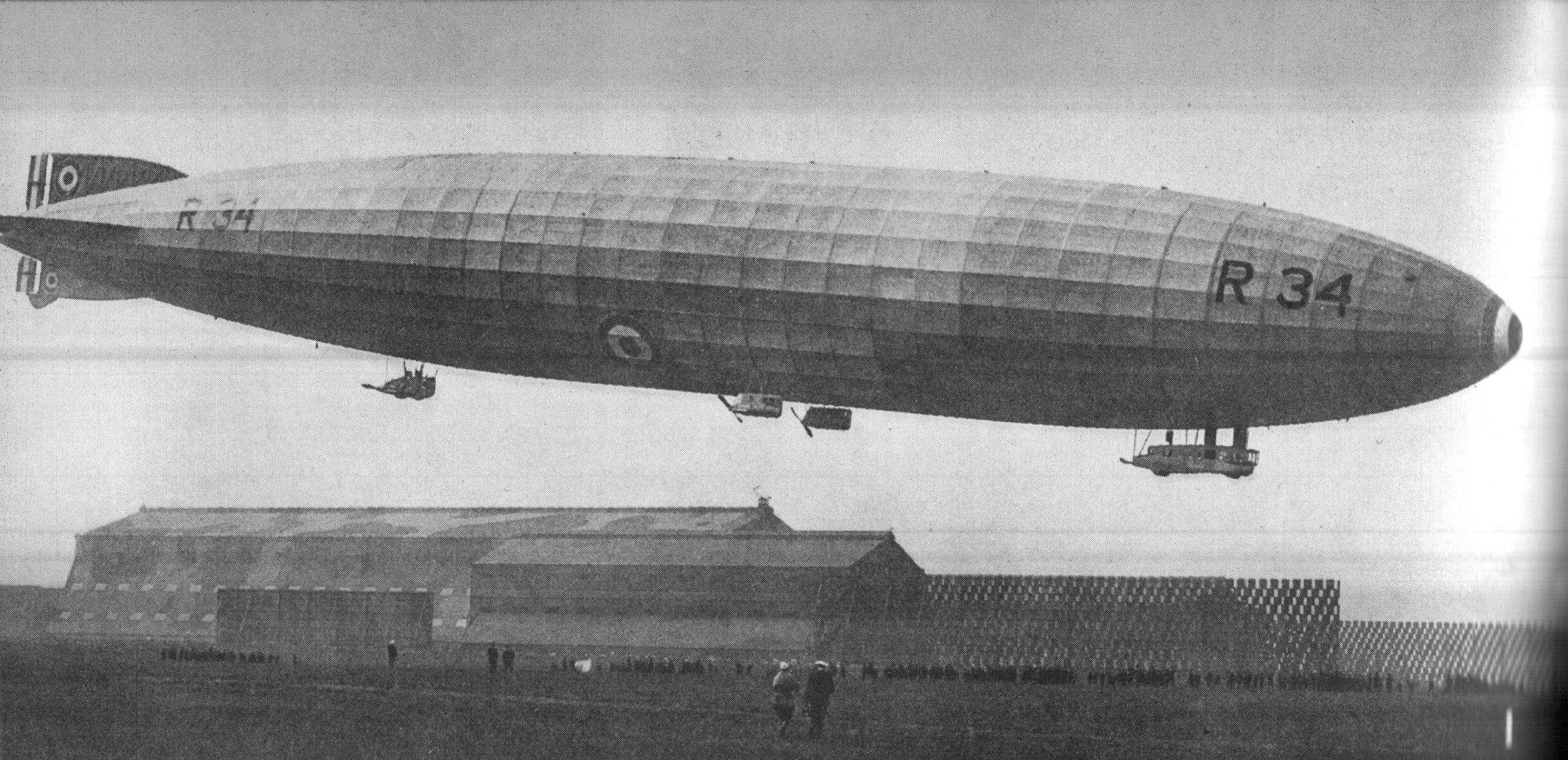 ;
;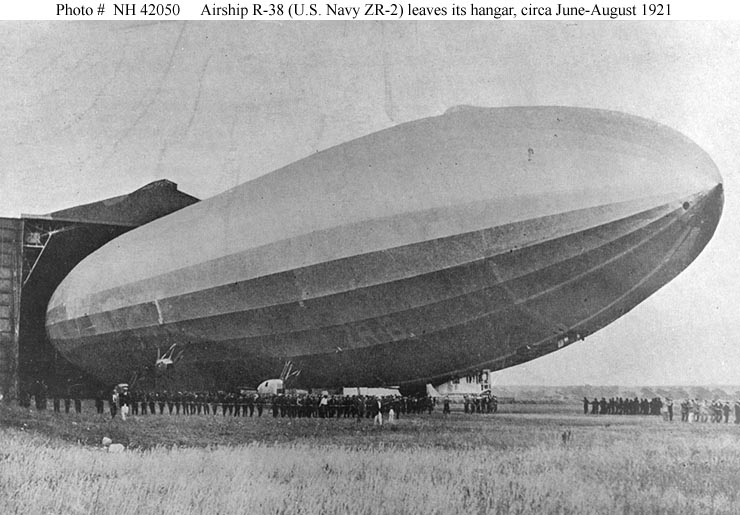 ;
; * R81 - Not Built
;
* R81 - Not Built
;
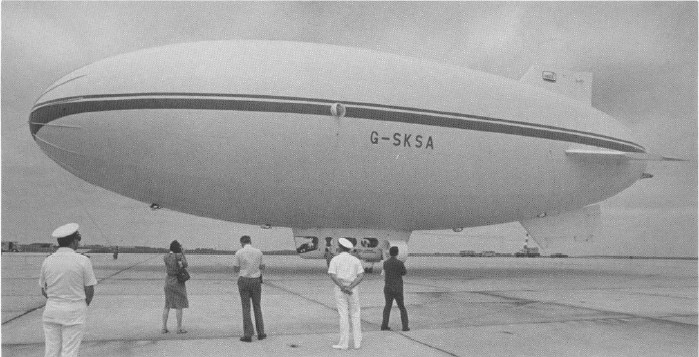 * Aerospace Developments/Airship Developments airships
** AD500 - first flight at Cardington, 3 February 1979. Damaged by high winds, 8 March 1979 and never repaired.
*
* Aerospace Developments/Airship Developments airships
** AD500 - first flight at Cardington, 3 February 1979. Damaged by high winds, 8 March 1979 and never repaired.
* ** HAV-3 - scale demonstrator based on Skycat for the
** HAV-3 - scale demonstrator based on Skycat for the
Airship
An airship or dirigible balloon is a type of aerostat or lighter-than-air aircraft that can navigate through the air under its own power. Aerostats gain their lift from a lifting gas that is less dense than the surrounding air.
In early ...
development in the United Kingdom
The United Kingdom of Great Britain and Northern Ireland, commonly known as the United Kingdom (UK) or Britain, is a country in Europe, off the north-western coast of the continental mainland. It comprises England, Scotland, Wales and ...
lagged behind that of Germany and France. The first British designed and built airship was constructed by Stanley Spencer
Sir Stanley Spencer, CBE RA (30 June 1891 – 14 December 1959) was an English painter. Shortly after leaving the Slade School of Art, Spencer became well known for his paintings depicting Biblical scenes occurring as if in Cookham, the sma ...
, and on 22 September 1902 was flown from Crystal Palace, London
Crystal Palace is an area in south London, England, named after the Crystal Palace Exhibition building, which stood in the area from 1854 until it was destroyed by fire in 1936. Approximately
south-east of Charing Cross, it includes one of ...
to Ruislip
Ruislip ( ) is an area in the London Borough of Hillingdon in West London, and in the historic county of Middlesex. Ruislip lies west-north-west of Charing Cross, London.
The manor of Ruislip appears in the Domesday Book, and some of the ear ...
, carrying an advertisement for baby food. A series of more practical airships was constructed by Ernest Willows
Ernest Thompson Willows (1886–1926) was a pioneer Welsh aviator and airship builder. He became the first person in the United Kingdom to hold a pilots certificate for an airship when the Royal Aero Club awarded him ''Airship Pilots Certificat ...
, the "Willows Number 1" making its first flight near Cardiff
Cardiff (; cy, Caerdydd ) is the capital city, capital and List of urban areas in the United Kingdom, largest city of Wales. It forms a Principal areas of Wales, principal area, officially known as the City and County of Cardiff ( cy, Dinas a ...
on 5 August 1905. The Royal Navy
The Royal Navy (RN) is the United Kingdom's naval warfare force. Although warships were used by English and Scottish kings from the early medieval period, the first major maritime engagements were fought in the Hundred Years' War against Fr ...
realised that airships similar to Ferdinand von Zeppelin
Count Ferdinand von Zeppelin (german: Ferdinand Adolf Heinrich August Graf von Zeppelin; 8 July 1838 – 8 March 1917) was a German general and later inventor of the Zeppelin rigid airships. His name soon became synonymous with airships a ...
's designs could be of great use and in 1909 ordered construction of a rigid airship
A rigid airship is a type of airship (or dirigible) in which the envelope is supported by an internal framework rather than by being kept in shape by the pressure of the lifting gas within the envelope, as in blimps (also called pressure air ...
. This was completed in 1911 but was wrecked while leaving the hangar before it had flown. Meanwhile, the British Army
The British Army is the principal land warfare force of the United Kingdom, a part of the British Armed Forces along with the Royal Navy and the Royal Air Force. , the British Army comprises 79,380 regular full-time personnel, 4,090 Gurkha ...
's School of Ballooning
The School of Ballooning was a training and test centre for British Army experiments with balloons and airships. It was established at Chatham in Kent in 1888. The School moved to Stanhope Lines, Aldershot in 1890 when a balloon section and de ...
, later the Air Battalion Royal Engineers, acquired a small fleet of semi-rigid and non-rigid airship
A blimp, or non-rigid airship, is an airship (dirigible) without an internal structural framework or a keel. Unlike semi-rigid and rigid airships (e.g. Zeppelins), blimps rely on the pressure of the lifting gas (usually helium, rather than hydr ...
s for observation purposes; they were taken over by the Royal Navy on the creation of the Royal Naval Air Service
The Royal Naval Air Service (RNAS) was the air arm of the Royal Navy, under the direction of the Admiralty's Air Department, and existed formally from 1 July 1914 to 1 April 1918, when it was merged with the British Army's Royal Flying Corps t ...
in 1914. A large number of rigid and non-rigid airships were mainly used to counter the U-Boat campaign in World War I. Interest in military airships declined at the end of the war, but some success in the commercial field inspired the Imperial Airship Scheme
The British Imperial Airship Scheme was a 1920s project to improve communication between Britain and the distant countries of the British Empire by establishing air routes using airships. The first phase was the construction of two large and t ...
; however, the disastrous crash of the R101
R101 was one of a pair of British rigid airships completed in 1929 as part of a British government programme to develop civil airships capable of service on long-distance routes within the British Empire. It was designed and built by an Air M ...
in 1930 ended serious government and commercial interest in airships. Since the 1970s, there have been persistent efforts to revive a British airship industry, using new designs, materials and technologies.
Semi-rigid and non-rigid airships

Willows airships
 : Willows Numbers 1 to 5 - constructed by
: Willows Numbers 1 to 5 - constructed by Ernest Willows
Ernest Thompson Willows (1886–1926) was a pioneer Welsh aviator and airship builder. He became the first person in the United Kingdom to hold a pilots certificate for an airship when the Royal Aero Club awarded him ''Airship Pilots Certificat ...
from 1905.
British Army airships
:British Army Dirigible No 1
British Army Dirigible No 1, christened ''Nulli Secundus'' (Latin: "Second to none") was a semi-rigid airship. First flown on 10 September 1907, it was Britain's first powered military aircraft.
Design
Built at the Army's Balloon Factory at ...
- or ''"Nulli Secundus"''; first flight, 10 September 1907. Damaged by high wind, 10 October 1907 and rebuilt with enlarged envelope as ''Nulli Secundus II''.
: Nulli Secundus II - first flight 24 July 1908. Damaged on 15 August and never repaired
: "Baby" - 1909, "British Army Airship No.3"
: ''Beta'' - May 1910 (a rebuild of "Baby" with a new envelope)
: ''Beta'' II - 1912 (a rebuild of Beta)
: No.2A - 1910, 150 feet long, with a gas capacity of 75,000 feet, powered by an 80hp British Green motor.
: ''Gamma'' - February 1910
: ''Gamma'' II - 1912 (A rebuild of Gamma)
: ''Delta'' - 1912
: ''Eta'' - August 1913. Transferred to Royal Navy, 1914.
Two French-built airships, ''Clément-Bayard
Clément-Bayard, Bayard-Clément, was a French manufacturer of automobiles, aeroplanes and airships founded in 1903 by entrepreneur Gustave Adolphe Clément. Clément obtained consent from the Conseil d'Etat to change his name to that of his b ...
II'' and the ''Morning Post
''The Morning Post'' was a conservative daily newspaper published in London from 1772 to 1937, when it was acquired by ''The Daily Telegraph''.
History
The paper was founded by John Bell. According to historian Robert Darnton, ''The Morning Po ...
'' were operated by the British Army from 1910 to 1914. The latter had been donated by the readers of a British newspaper.

Royal Naval airships
 : Willows No. 4 - His Majesty's Naval Airship No. 2 - purchased in 1912
: SS (Sea Scout) class - 60 airships, the first entered service in March 1915, being a rebuild of Willows No. 4
: C (Coastal) class - 35 airships, the first entered service in March 1916, being a rebuild of a Franco-Spanish
: Willows No. 4 - His Majesty's Naval Airship No. 2 - purchased in 1912
: SS (Sea Scout) class - 60 airships, the first entered service in March 1915, being a rebuild of Willows No. 4
: C (Coastal) class - 35 airships, the first entered service in March 1916, being a rebuild of a Franco-Spanish Astra-Torres airship
The Astra-Torres airships were non-rigid airships built by Société Astra in France between about 1908 and 1922 to a design by the Spaniard Leonardo Torres Quevedo. They had a highly-characteristic tri-lobed cross-section rather than the more usu ...
: SSZ (Sea Scout Zero) class - 77 airships; entered service from September 1916
: SSP (Sea Scout Pusher) class - 6 airships; entered service from January 1917
: C-Star class - 10 airships: entered service from February 1918
: NS (North Sea) class - 14 airships; entered service from March 1918
: SST (Sea Scout Twin) class - 13 airships; entered service from June 1918
Post World War II civilian airships
:Airship Club ''Bournemouth'' - first flight, 1951. Final flight, 16 August 1952 : ''Chitty Bang Bang'' - first flight, 1967 semi-rigid in period style for the film ''Chitty Chitty Bang Bang
''Chitty Chitty Bang Bang'' is a 1968 musical-fantasy film directed by Ken Hughes with a screenplay co-written by Roald Dahl and Hughes, loosely based on Ian Fleming's novel '' Chitty-Chitty-Bang-Bang: The Magical Car'' (1964). The film stars ...
''
:''Santos Dumont'' (G-BAWL) - first flight at Cardington in 1974. A 72 foot (22 metre) non-rigid airship powered by two 20 hp Wankel engine
The Wankel engine (, ) is a type of internal combustion engine using an eccentric rotary design to convert pressure into rotating motion. It was invented by German engineer Felix Wankel, and designed by German engineer Hanns-Dieter Paschke. ...
s with ducted fans - a private venture that logged 31 flying hours.
Rigid airships
 * His Majesty's Airship No. 1 - also known as the ''Mayfly''. Wrecked before her maiden flight in May 1911
;
* His Majesty's Airship No. 1 - also known as the ''Mayfly''. Wrecked before her maiden flight in May 1911
;No. 9r
HMA ''No. 9r'' was a rigid airship designed and built by Vickers at Walney Island just off Barrow-in-Furness, Cumbria. It was ordered in 1913 but did not fly until 27 November 1916 when it became the first British rigid airship to do so. It w ...
s
* HMA No. 9r - first flight 27 November 1916. Scrapped in June 1918
* HMA No. 14r - Not Built
* HMA No. 15r - Not Built
;23 class airship
The 23 class were rigid airships produced in the United Kingdom during the First World War. Development of the 23 class began in August 1915 when Vickers was asked to improve the 9r design by increasing its gas capacity by adding a bay and inc ...
s
* No. 23r - first flight, 19 September 1917. Scrapped September 1919
 * No. 24r - first flight 1917, scrapped 1919
* No. 25r - first flight, 14 October 1917. Scrapped September 1919
* R26 - first flight 1918. Scrapped following accident, March 1919
;
* No. 24r - first flight 1917, scrapped 1919
* No. 25r - first flight, 14 October 1917. Scrapped September 1919
* R26 - first flight 1918. Scrapped following accident, March 1919
;R23X-class airship
The British R.23X class of rigid airships were developed during World War I using the experiences gained from the 23 class, but only two of the planned four R.23X class were built: ''R.27'' and ''R.29''. Both were completed mid-1918, but just ...
s
* R27 - commissioned 29 June 1918. Destroyed by hangar fire, 16 August 1918
* R28 - Not Completed
* R29 - commissioned 20 June 1918. Scrapped, October 1919
* R30 - Not Completed
;R31 class airship
The ''R31'' class of British rigid airships was constructed in the closing months of World War I, and comprised two aircraft, His Majesty's Airship ''R31'' and ''R32''. They were designed by the Royal Corps of Naval Constructors – with assist ...
s
* R31 - first flight, July 1918. Scrapped February 1919
* R32 - first flight, 3 September 1919. Tested to destruction, 1920
 ;
;R33 class airship
The R.33 class of British rigid airships were built for the Royal Naval Air Service during the First World War, but were not completed until after the end of hostilities, by which time the RNAS had become part of the Royal Air Force. The le ...
s
* R33 - first flight, 6 March 1919. Scrapped March 1928 (G-FAAG)
* R34 - first flight, 14 March 1919. Scrapped after storm damage, 27 January 1921
* R35 - Not Completed
; R36 class airships
* R36 - first flight, 1 April 1921. Accidental damage on 21 June 1921 and never repaired (G-FAAF)
* R37 - Not Completed
 ;
;R38 class airship
The ''R.38'' class (also known as the ''A'' class) of rigid airships was designed for Britain's Royal Navy during the final months of the First World War, intended for long-range patrol duties over the North Sea. Four similar airships were o ...
s
* R38 - first flight, 23 June 1921. Sold to US Navy
The United States Navy (USN) is the maritime service branch of the United States Armed Forces and one of the eight uniformed services of the United States. It is the largest and most powerful navy in the world, with the estimated tonnage ...
as ''ZR-2'' but broke up in flight over Hull
Hull may refer to:
Structures
* Chassis, of an armored fighting vehicle
* Fuselage, of an aircraft
* Hull (botany), the outer covering of seeds
* Hull (watercraft), the body or frame of a ship
* Submarine hull
Mathematics
* Affine hull, in affi ...
on 23 August 1921
* R39 - Not Completed
* R40 - Not Completed
* R41 - Not Built
; R80 class airships
* R80 - first flight, 19 July 1920. Tested to destruction, 1925
Imperial Airship Scheme
The British Imperial Airship Scheme was a 1920s project to improve communication between Britain and the distant countries of the British Empire by establishing air routes using airships. The first phase was the construction of two large and t ...
airships
* R100 - first flight, 16 December 1929. Scrapped November 1931 (G-FAAV)
*R101
R101 was one of a pair of British rigid airships completed in 1929 as part of a British government programme to develop civil airships capable of service on long-distance routes within the British Empire. It was designed and built by an Air M ...
- first flight, 14 October 1929. Crashed in France, 5 October 1930 (G-FAAW)
*R102
The R.102 (originally referred to as Project H) was a British airship planned in 1930 but never built.
The development of R.102 resulted from the Imperial Airship Scheme, when it became apparent that the R100 and R101 airships then being buil ...
- cancelled before construction, August 1931
In addition to these airships, there were the following uncompleted projects: Vickers Types I - IV, Admiralty 'Y' Class, R103 and R104
Modern airship projects
 * Aerospace Developments/Airship Developments airships
** AD500 - first flight at Cardington, 3 February 1979. Damaged by high winds, 8 March 1979 and never repaired.
*
* Aerospace Developments/Airship Developments airships
** AD500 - first flight at Cardington, 3 February 1979. Damaged by high winds, 8 March 1979 and never repaired.
*Airship Industries
Airship Industries was a British manufacturers of modern non-rigid airships (blimps) active under that name from 1980 to 1990 and controlled for part of that time by Alan Bond. The first company, Aerospace Developments, was founded in 1970, and a ...
airships
** Airship Industries Skyship 500 - first flight at Cardington, 28 September 1981. Four other Skyships were completed, three of them abroad in the US, Canada and Japan.
**Airship Industries Skyship 600
The Airship Industries Skyship 600 is a modern airship, originally designed by British company Airship Industries, further developed by a subsidiary of Westinghouse Electric Corporation the type certificate holder is now Skyship Services of Or ...
- first flight at Cardington, 6 March 1984. Two of ten 600s were built at Cardington, the others in the US and Japan.
* Advanced Technologies Group (ATG) airships
** Advanced Technologies Group AT-10 - one prototype completed and flown
**SkyCat
SkyCat (a portmanteau of "Sky Catamaran") is a class of proposed heavy-lift hybrid airships which derive more than half of their lift by helium buoyancy and the balance via aerodynamic lift produced by aerodynamic shaping. The SkyCat design incorp ...
- proposed hybrid airship
A hybrid airship or plimp is a powered aircraft that obtains some of its lift as a lighter-than-air (LTA) airship and some from aerodynamic lift as a heavier-than-air aerodyne.
A ''dynastat'' is a hybrid airship with fixed wings and/or a liftin ...
** Skykitten - 12 metre long 1:6 scale flying demonstrator of Skycat
*Hybrid Air Vehicles
Hybrid Air Vehicles (HAV) Limited is a British limited company and a British manufacturer of hybrid airships, though none have been built since the crash of its last demonstrator. These aircraft use both aerodynamics and lighter-than-air (LTA) ...
US Army
The United States Army (USA) is the land service branch of the United States Armed Forces. It is one of the eight U.S. uniformed services, and is designated as the Army of the United States in the U.S. Constitution.Article II, section 2, cla ...
's Long Endurance Multi-intelligence Vehicle (LEMV) project; first flight, September 2008 at Cardington.
** Hybrid Air Vehicles HAV 304 Airlander 10 - 91 metre long, 38,000 cubic metre developmental prototype for the LEMV project. first flight on 8 August 2012 at Joint Base McGuire-Dix-Lakehurst
A joint or articulation (or articular surface) is the connection made between bones, ossicles, or other hard structures in the body which link an animal's skeletal system into a functional whole.Saladin, Ken. Anatomy & Physiology. 7th ed. McGraw- ...
. Sold back to Hybrid Air Vehicles on the cancellation of the project in 2013 and returned to Cardington. Converted for civilian use as the Airlander 10. During a test flight from Cardington on 24 August 2016, the Airlander's mooring line fouled a power cable, resulting in it striking the ground hard, damaging the cockpit. In April 2017, it was reported that repairs and modifications, including the addition of inflatable landing "feet", were complete and that the Airlander was ready to resume test flights. On 18 November 2017, the Airlander broke free from its moorings, activating a safety system that deflated the hull. Subsequently, HAV announced that the prototype would be retired due to "very considerable damage" sustained in the incident, pending the development of an improved replacement. A redesigned Airlander 10 was announced in January 2020, with new gondola, nose and tail sections, extending the overall length to . A research project to power the aircraft with electric motors was undertaken with the University of Nottingham
, mottoeng = A city is built on wisdom
, established = 1798 – teacher training college1881 – University College Nottingham1948 – university status
, type = Public
, chancellor ...
. The company hopes to have the improved Airlander flying by 2024.
** Airlander 50 - projected larger development of the HAV304, intended to have a 50 tonne payload.
References
External links
{{DEFAULTSORT:British Airships Lists of airshipsAirships
An airship or dirigible balloon is a type of aerostat or lighter-than-air aircraft that can navigate through the air under its own power. Aerostats gain their lift from a lifting gas that is less dense than the surrounding air.
In early ...
Airships
An airship or dirigible balloon is a type of aerostat or lighter-than-air aircraft that can navigate through the air under its own power. Aerostats gain their lift from a lifting gas that is less dense than the surrounding air.
In early ...
Airships
An airship or dirigible balloon is a type of aerostat or lighter-than-air aircraft that can navigate through the air under its own power. Aerostats gain their lift from a lifting gas that is less dense than the surrounding air.
In early ...